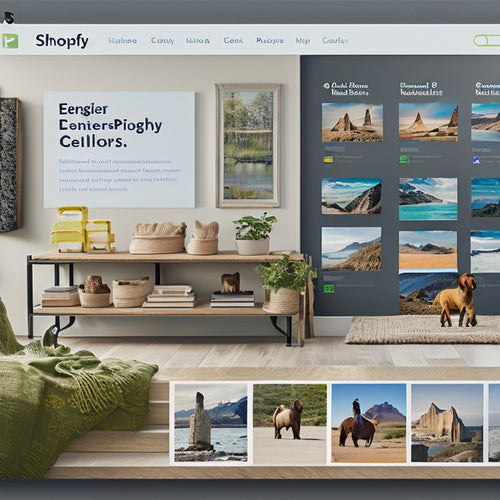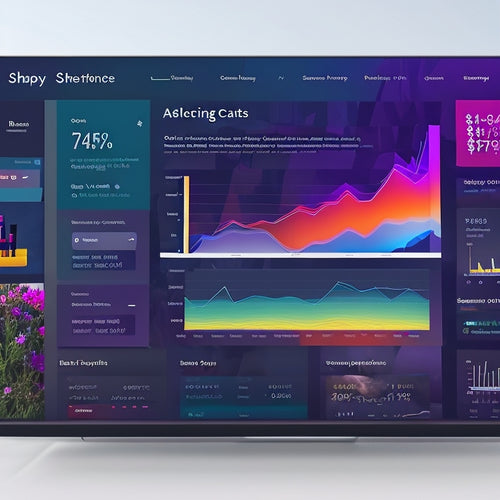
Essential Guide for Successful B2B Ecommerce Transition
Share
You're about to join the ranks of the 68% of B2B companies that have already shifted to ecommerce, but to guarantee a successful shift, you need a solid strategy that addresses the unique complexities of your business. Start by thoroughly defining your business requirements and outlining a detailed plan to avoid costly mistakes. Implement a robust customer segmentation strategy to manage wholesale access and sales. Then, optimize your operations and growth by integrating efficient payment, shipping, and tax management systems. By following these steps, you'll be well on your way to a seamless transformation. Now, it's time to take a closer look at the specifics that will set your business up for long-term success.
Key Takeaways
• Define business requirements and outline a detailed plan to avoid costly mistakes and ensure a smooth B2B ecommerce transition.
• Implement a robust customer segmentation strategy to manage wholesale access and sales, granting access to authorized customers only.
• Integrate efficient payment, shipping, and tax management systems to optimize operations and drive growth through automation and data analytics.
• Document business processes and operational requirements to lay a solid foundation for a seamless transition to B2B ecommerce.
• Prioritize features, identify potential roadblocks, and document customer needs to reduce surprises and development costs in the long run.
Planning for B2B Ecommerce Success
To guarantee a smooth shift to B2B ecommerce, you must thoroughly define your business requirements and outline a detailed plan, as this pivotal step lays the foundation for a successful online wholesale store.
By doing so, you'll avoid costly mistakes and make certain that your website meets your unique needs. Clearly outlining your business requirements helps you identify potential roadblocks and prioritize features, reducing development costs and surprises down the line.
Take the time to document your business processes, customer needs, and operational requirements. This will enable you to create a tailored solution that streamlines your wholesale operations and sets you up for long-term success.
Managing Wholesale Access and Sales
Your wholesale ecommerce store's success hinges on your ability to effectively manage access and sales, ensuring that only authorized customers can view and purchase products at designated prices. To achieve this, you need to implement a robust customer segmentation strategy, which involves categorizing customers based on their business needs and requirements. This allows you to create a tailored approval process, granting access to specific customer groups.
| Customer Type | Access Level | Approval Process |
|---|---|---|
| Brick-and-Mortar | Limited | Manual Approval |
| Online Store | Full | Automated Approval |
| Distributor | Custom | Tiered Approval |
Optimizing Operations and Growth
Streamline your wholesale ecommerce operations by integrating efficient payment, shipping, and tax management systems that cater to your unique business needs. You'll achieve operations efficiency by automating tasks, reducing manual errors, and increasing order processing speed. This will enable you to focus on customer engagement and growth strategies.
Implement a robust order management system that can handle bulk orders, backorders, and custom pricing. Leverage data analytics to gain insights into customer behavior, preferences, and pain points. This will help you develop targeted marketing campaigns, improve customer satisfaction, and increase loyalty.
Frequently Asked Questions
How Do I Ensure Data Security and Compliance in My B2B Ecommerce Platform?
To guarantee data security and compliance in your B2B ecommerce platform, you'll want to implement robust data encryption and access control measures, controlling who has access to sensitive data and encrypting it both in transit and at rest.
Can I Integrate My B2B Ecommerce Site With Existing ERP or CRM Systems?
Given that you're probably already using an ERP or CRM system, you'll want to guarantee seamless integration with your B2B ecommerce site, focusing on system compatibility and data synchronization to avoid duplication and errors.
What Analytics and Reporting Tools Are Essential for B2B Ecommerce Success?
You'll need analytics and reporting tools that provide data visualization and customer insights, enabling you to track sales, customer behavior, and supply chain performance, and make data-driven decisions to optimize your B2B ecommerce operations.
How Can I Handle Returns, Refunds, and Exchanges in a B2B Ecommerce Environment?
You'll need a clear Return Policy outlining procedures, timelines, and restocking fees, plus a streamlined Exchange Process allowing customers to swap or replace items efficiently, ensuring transparency and minimizing logistical headaches in your B2B ecommerce environment.
What Are the Best Practices for Implementing a Loyalty Program in B2B Ecommerce?
Are you struggling to keep your B2B customers loyal? You implement a loyalty program by designing Reward Tiers that cater to specific Customer Segmentation, offering tailored benefits and rewards that drive repeat business and long-term partnerships.
Related Posts
-

What Can Shopify Integrate With
This article aims to explore the various integration options available for Shopify. By examining the benefits of int...
-

Top Shopify SEO Apps for Boosting Website Performance
This article aims to examine the importance of utilizing Shopify SEO apps in order to enhance website performance. S...
-

What Is the Best Pop Up for Shopify
Pop-up plugins for Shopify have gained widespread popularity due to their ability to enhance user experience and boo...


